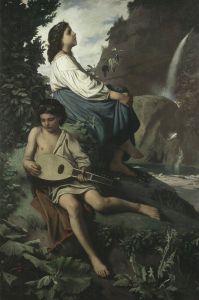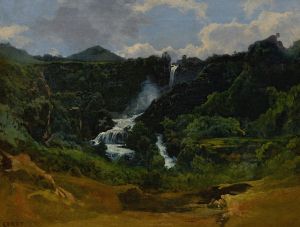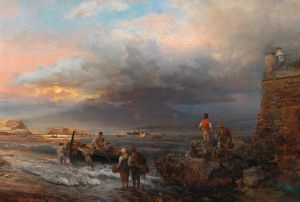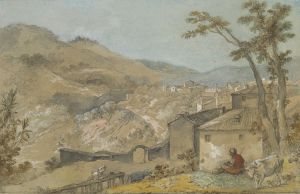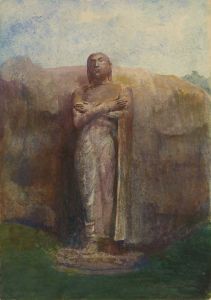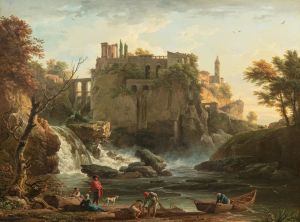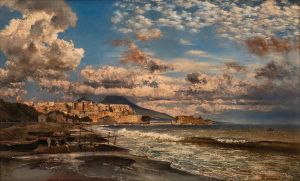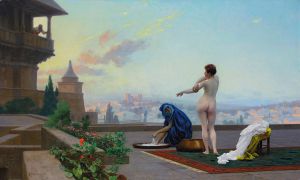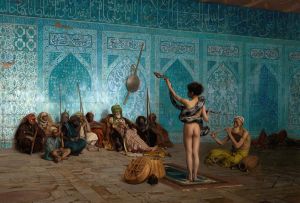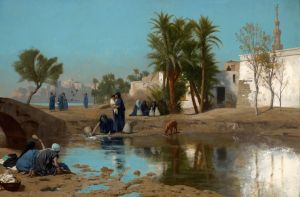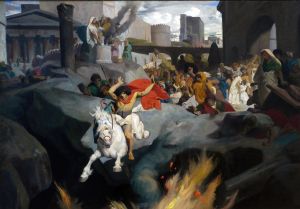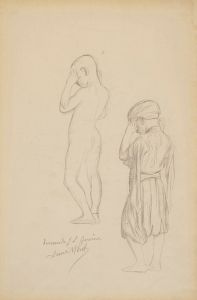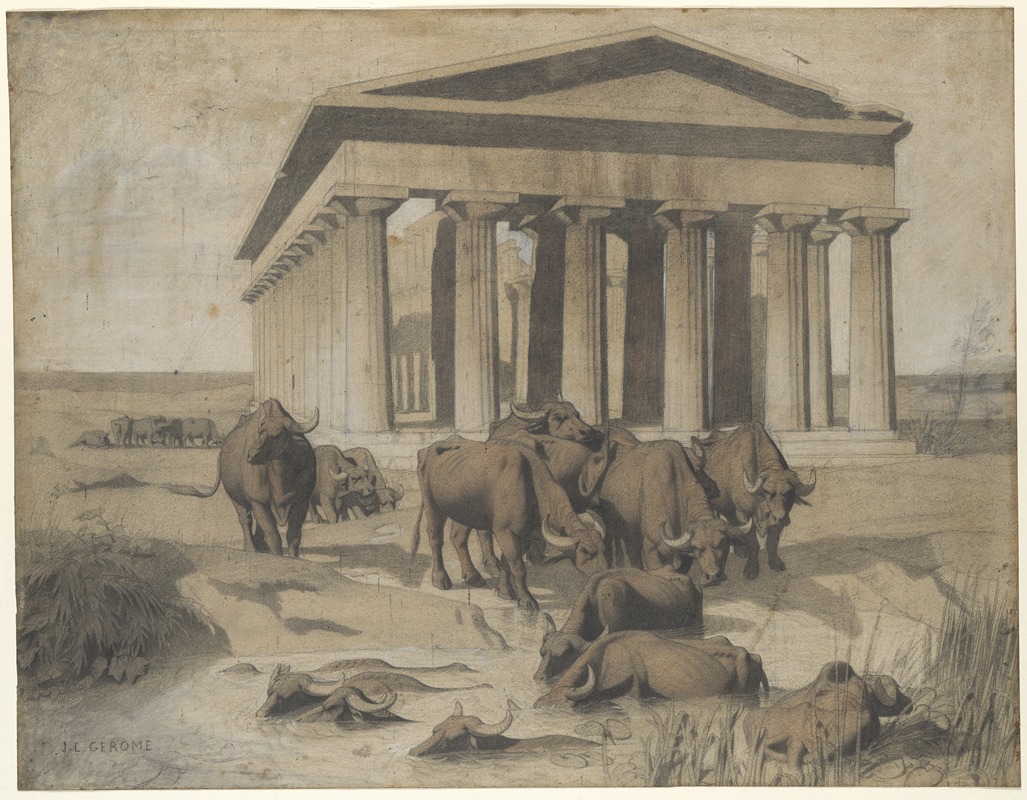
Paestum
A hand-painted replica of Jean-Léon Gérôme’s masterpiece Paestum, meticulously crafted by professional artists to capture the true essence of the original. Each piece is created with museum-quality canvas and rare mineral pigments, carefully painted by experienced artists with delicate brushstrokes and rich, layered colors to perfectly recreate the texture of the original artwork. Unlike machine-printed reproductions, this hand-painted version brings the painting to life, infused with the artist’s emotions and skill in every stroke. Whether for personal collection or home decoration, it instantly elevates the artistic atmosphere of any space.
Jean-Léon Gérôme's painting Paestum is a work by the renowned 19th-century French academic painter, sculptor, and teacher. Gérôme is widely recognized for his detailed and historically inspired works, often depicting scenes from antiquity, the Orient, and classical mythology. Paestum reflects his interest in ancient history and architecture, showcasing the ruins of the ancient Greek city of Paestum, located in southern Italy.
Paestum, originally founded by Greek settlers in the 6th century BCE, is famous for its well-preserved Doric temples, which are among the finest examples of ancient Greek architecture in the Western world. Gérôme's painting captures the grandeur and timelessness of these ruins, emphasizing their monumental scale and the serene landscape surrounding them. The artwork is a testament to Gérôme's meticulous attention to detail and his ability to evoke a sense of historical reverence.
The exact date of the painting's creation is not definitively documented, but Gérôme's interest in classical antiquity and archaeological subjects was a recurring theme throughout his career, particularly in the mid-to-late 19th century. His travels to Italy and other Mediterranean regions likely inspired this work, as he often drew upon firsthand observations of historical sites for his compositions.
In Paestum, Gérôme employs his characteristic precision and realism, capturing the interplay of light and shadow on the ancient stone structures. The painting may also reflect the broader 19th-century fascination with classical antiquity, which was fueled by archaeological discoveries and the Romantic movement's interest in the sublime and the passage of time.
While Gérôme's works were highly celebrated during his lifetime, they later fell out of favor with the rise of modernist movements in the early 20th century. However, his reputation has since been reassessed, and he is now regarded as one of the leading figures of academic art in the 19th century. Paestum exemplifies his dedication to historical accuracy and his ability to bring ancient worlds to life through his art.
Further details about the painting, such as its current location or specific provenance, are not readily available in existing records.





